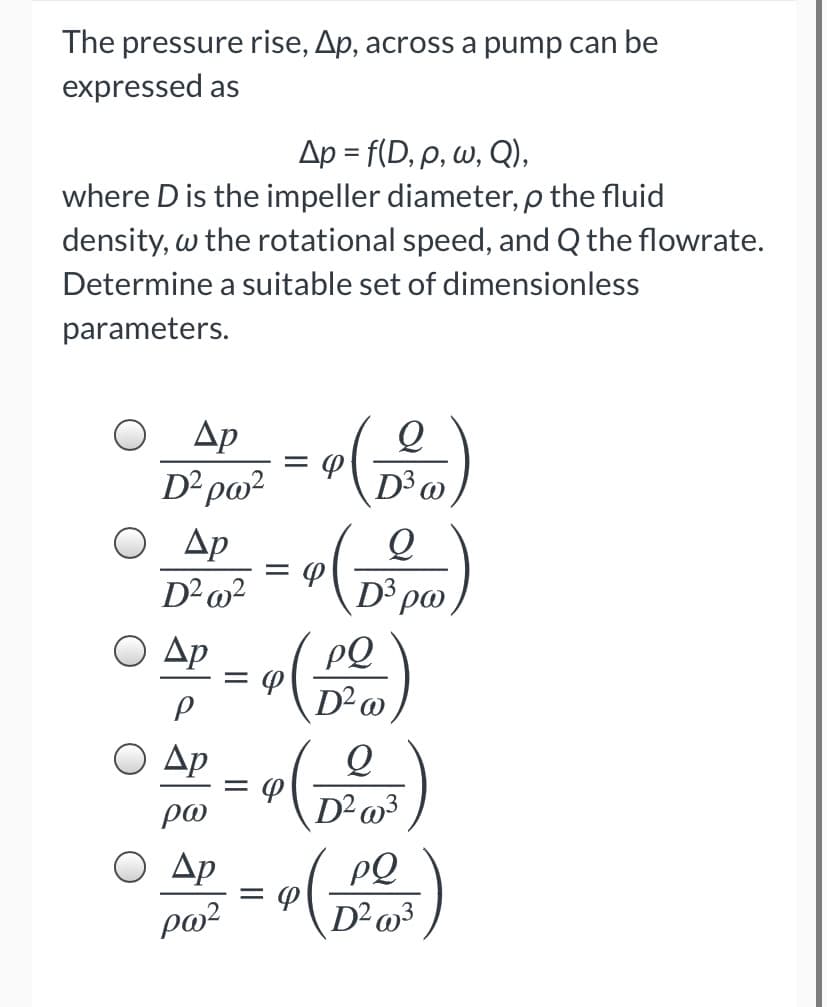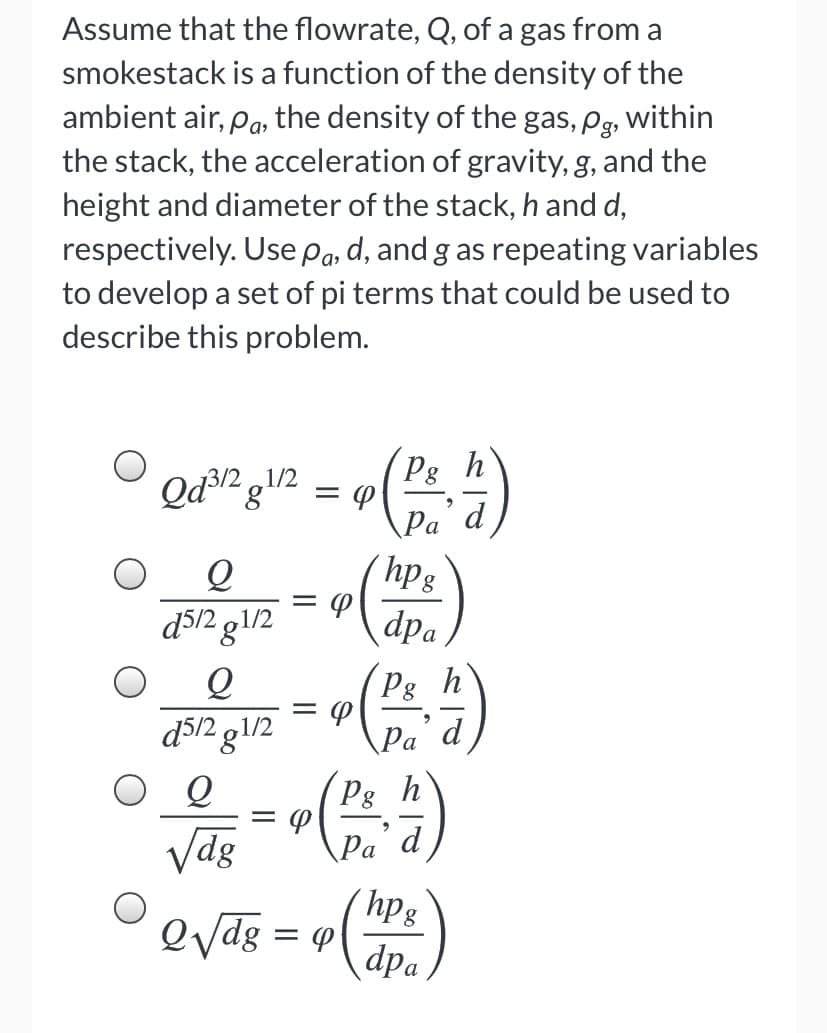The pressure rise, Ap, across a pump can be expressed as Ap = f(D, p, w, Q), where D is the impeller diameter, p the fluid density, w the rotational speed, and Q the flowrate. Determine a suitable set of dimensionless parameters.
The pressure rise, Ap, across a pump can be expressed as Ap = f(D, p, w, Q), where D is the impeller diameter, p the fluid density, w the rotational speed, and Q the flowrate. Determine a suitable set of dimensionless parameters.
Elements Of Electromagnetics
7th Edition
ISBN:9780190698614
Author:Sadiku, Matthew N. O.
Publisher:Sadiku, Matthew N. O.
ChapterMA: Math Assessment
Section: Chapter Questions
Problem 1.1MA
Related questions
Question
Please fast answer these 2 questions please i need both. Only final answer needed.

Transcribed Image Text:The pressure rise, Ap, across a pump can be
expressed as
Δρ -f D, ρ, ω, Q) ,
where D is the impeller diameter, p the fluid
density, w the rotational speed, and Q the flowrate.
Determine a suitable set of dimensionless
parameters.
Ap
D² po?
D3 @
O Ap
D²@?
D3
Ο Δp
PQ
D²o
Ο Δρ
po
O Ap
PQ
D²o³

Transcribed Image Text:Assume that the flowrate, Q, of a gas from a
smokestack is a function of the density of the
ambient air, Pa, the density of the gas, pg, within
the stack, the acceleration of gravity, g, and the
height and diameter of the stack, h and d,
respectively. Use Pa, d, and g as repeating variables
to develop a set of pi terms that could be used to
describe this problem.
Pg
h
Qd³12
1/2
8,
Pa´d
(hpg
P
dpa
d512 g1/2
Pg h
P
Pa´d
d$/2 g1/2
Pg
h
Vdg
Pa´d
hpg
evdg = p
dpa.
Expert Solution
This question has been solved!
Explore an expertly crafted, step-by-step solution for a thorough understanding of key concepts.
This is a popular solution!
Trending now
This is a popular solution!
Step by step
Solved in 4 steps with 4 images

Knowledge Booster
Learn more about
Need a deep-dive on the concept behind this application? Look no further. Learn more about this topic, mechanical-engineering and related others by exploring similar questions and additional content below.Recommended textbooks for you

Elements Of Electromagnetics
Mechanical Engineering
ISBN:
9780190698614
Author:
Sadiku, Matthew N. O.
Publisher:
Oxford University Press

Mechanics of Materials (10th Edition)
Mechanical Engineering
ISBN:
9780134319650
Author:
Russell C. Hibbeler
Publisher:
PEARSON

Thermodynamics: An Engineering Approach
Mechanical Engineering
ISBN:
9781259822674
Author:
Yunus A. Cengel Dr., Michael A. Boles
Publisher:
McGraw-Hill Education

Elements Of Electromagnetics
Mechanical Engineering
ISBN:
9780190698614
Author:
Sadiku, Matthew N. O.
Publisher:
Oxford University Press

Mechanics of Materials (10th Edition)
Mechanical Engineering
ISBN:
9780134319650
Author:
Russell C. Hibbeler
Publisher:
PEARSON

Thermodynamics: An Engineering Approach
Mechanical Engineering
ISBN:
9781259822674
Author:
Yunus A. Cengel Dr., Michael A. Boles
Publisher:
McGraw-Hill Education

Control Systems Engineering
Mechanical Engineering
ISBN:
9781118170519
Author:
Norman S. Nise
Publisher:
WILEY

Mechanics of Materials (MindTap Course List)
Mechanical Engineering
ISBN:
9781337093347
Author:
Barry J. Goodno, James M. Gere
Publisher:
Cengage Learning

Engineering Mechanics: Statics
Mechanical Engineering
ISBN:
9781118807330
Author:
James L. Meriam, L. G. Kraige, J. N. Bolton
Publisher:
WILEY